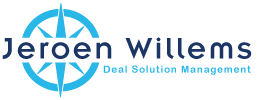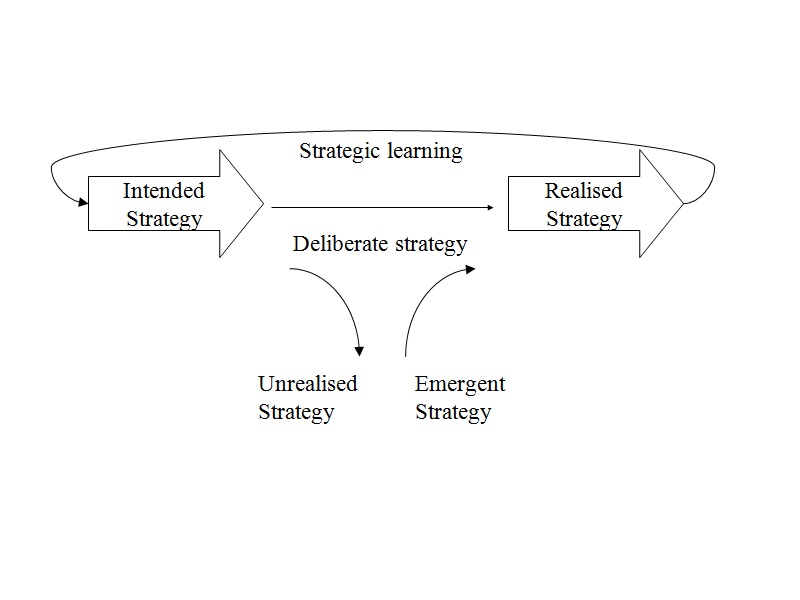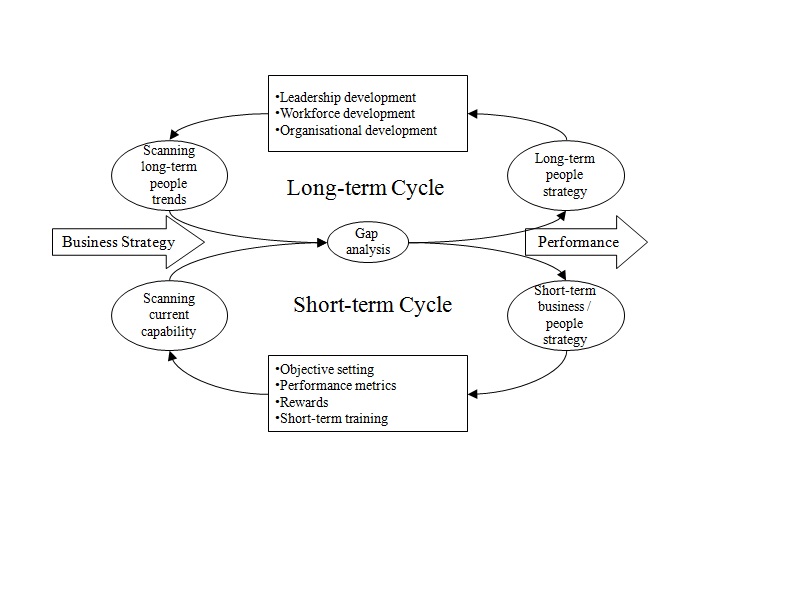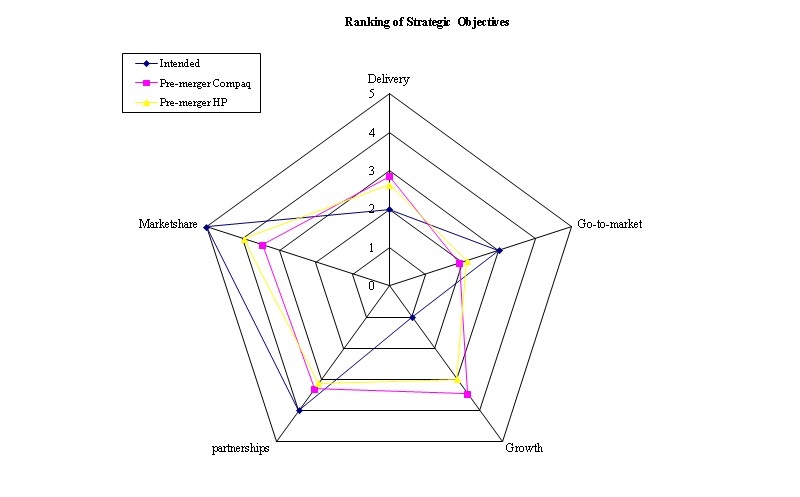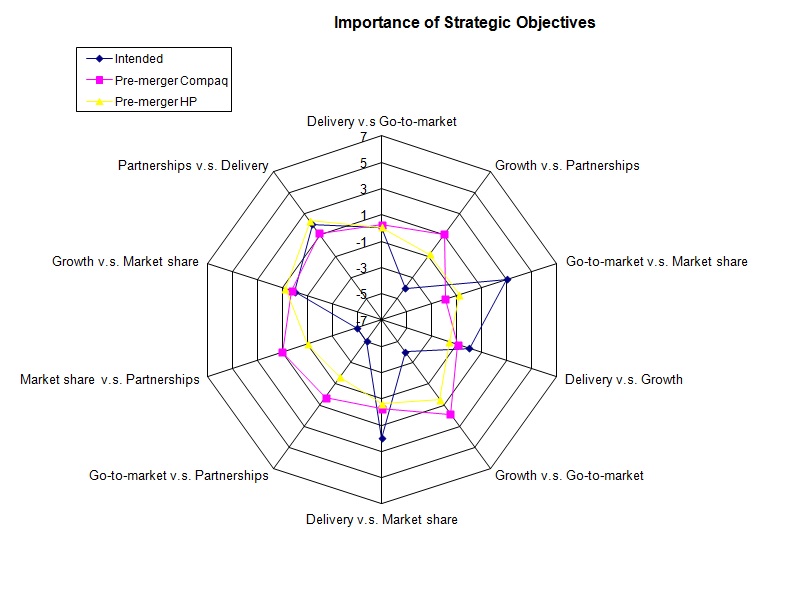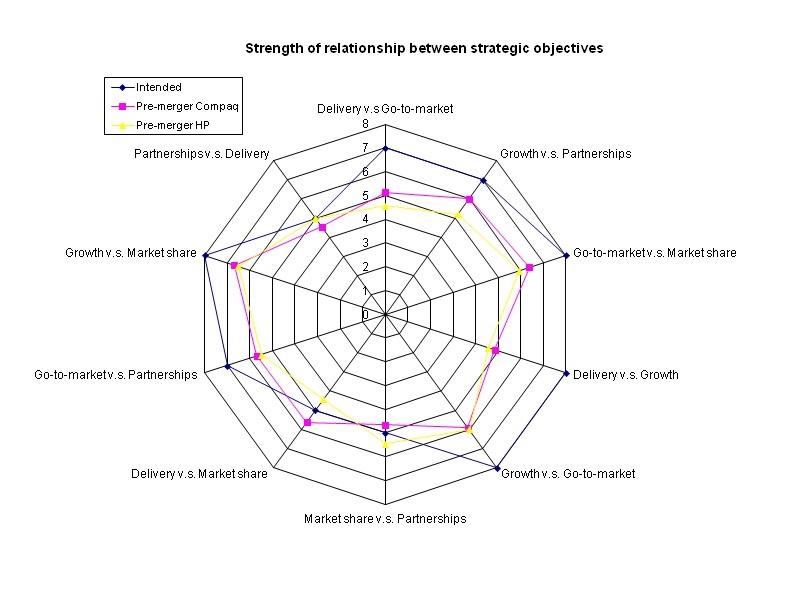This approach makes it easier to distinguish what the individual and her / his direct Management layer can to to improve day-to-day operations, and what higher Management can do to improve policy, aplying budgets where it most appropriate and apply tactics to direct the company as a whole.
The gap analysis is the central process that can empower both Management and Workforce. The HOSHIN plans the employees make can now be used as a basis for this regular gap analysis. The output of these gap analyses can be weighed against the prioritised objectives to define further action.
Common understanding:
With all the effort we put into HOSHIN plans etc. it is still evident that the Intended Strategy is not always ralised, or not realised sufficiently, which is a waste.
I theorised that perhaps
- The meaning of the objectives were not commonly understood
- The relationship between the objectives was not clearly understood
- That the priority of the objectives was not understood
- That the workforce did not really have any handles on how to apply these objectives in their daily work
In this page I use the words “Management” and Workforce” to make a distinction between the roles individuals have within the population of a company. Management is also part of the Workforce.
The meaning, the relationships and the priority of the Objecives:
The meaning of anything: If I say “Tree” within a group of people and each individual explains what a typical “Tree” is to them, I am sure to get a different description from each individual.
You do not want this in case Strategic objectives are discussed or embedded into people’s daily activities; Management and Workforce alike.
For this reason, we set out to define what the Objectives mean. The sponsor of the study defined the Objectives, the relationship between the Objectives and the priority of the Objectives.
|
Rank
|
Objective Description
|
|
1 Growth
|
Aggressively grow HPS
|
|
2 Deliver
|
Deliver against cost synergies and integration plan for the merger
|
|
3 Go-to-market
|
Implement strong services go-to-market and customer engagement models
|
|
4 Partnerships
|
Use HP’s strategic partnerships to complement HP’s strengths and extend HP’s reach
|
|
5 Market share
|
Expand HP’s leadership in the infrastructure services
|
The relationship between the Objectives is needed to understand how the Objectives depend on each other.
|
Objectives
|
Relationship
|
|
Growth v.s. Delivery
|
Growth needs great momentum of our integration plan and cross functional synergies
|
|
Growth v.s. Go-to-market
|
Growth is strengthened by strong customer engagement.
|
|
Growth v.s. Partnerships
|
Growth is complemented by strategic partners with competitive edges
|
|
Growth v.s. Market share
|
Growth is aimed at infrastructure services
|
|
Delivery v.s. Go-to-market
|
Delivery needs focus on strong customer engagement
|
|
Delivery v.s. Partnerships
|
Delivery is strengthened by strategic partners with competitive edges
|
|
Delivery v.s. Market share
|
Delivery is complemented by increased interest of infrastructure services
|
|
Go-to-market v.s. Partnerships
|
Go-to-market needs strategic partners with competitive edges
|
|
Go-to-market v.s. Market share
|
Go-to-market is strengthened by a strong focus on infrastructure services
|
|
Market share v.s. Partnerships
|
Market share is complemented by strategic partners with competitive edges
|
The uniqueness of this study was that the study could also be used to determine how the ex Compaq employees and Original HP employees perceived the Objectives.
